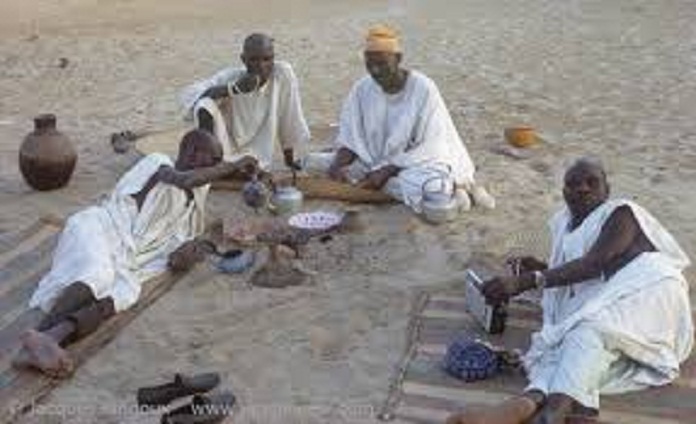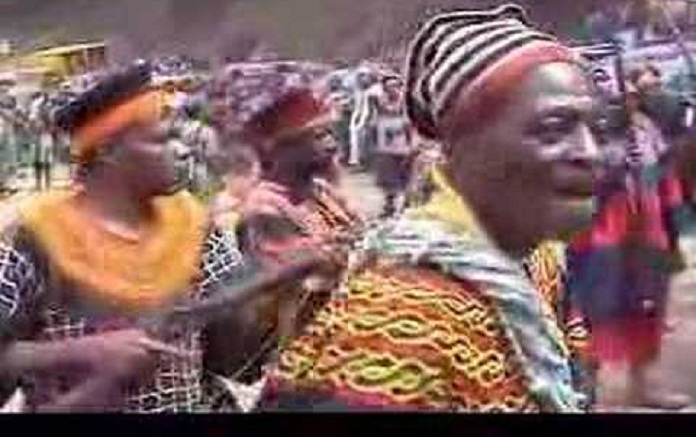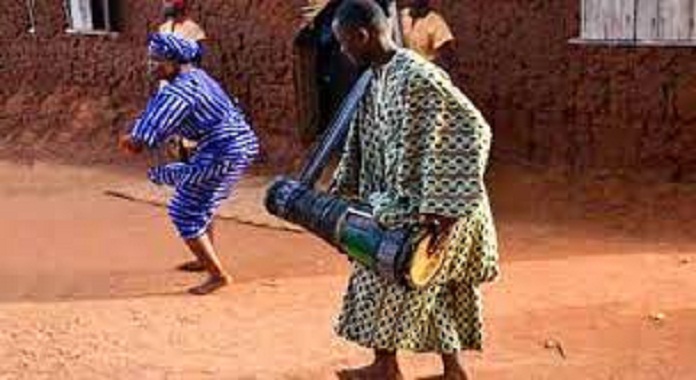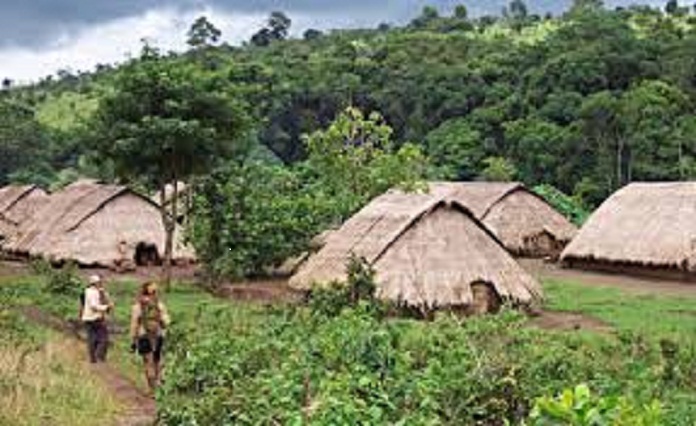Adamawa State has over 70 different tribes with a diverse and rich cultural heritage, which makes it one of the biggest multi-cultural states in the whole of Nigeria.
Adamawa State, which is located in the northeast geopolitical zone of Nigeria and is bordered by Borno, Gombe, Taraba, and Cameroon, was birthed in 1991 from the division of the formal Gongola state into Adamawa and Taraba states. It is one of the most diverse in Nigeria, with over 100 indigenous ethnic groups, and is one of the most heterogeneous in Nigeria.
What is more is that it takes its name from the historic emirate of Adamawa state, alongside the Emirate’s old capital of Yola, which today serves as the capital of the state. Below is more about Adamawa state and the tribes that inhabited the state, including their adoption, features, and popularity.
How Diverse are the Tribes in Adamawa State?
Aside from the state formation, Adamawa is also diverse in religion, which makes it unique when we say 55% of the inhabitants are Muslims, 30% are Christians, and the remaining are traditional worshippers.
The state has been in existence for donkey years with various ethnic groups including the Bwatiye (Bachama), Bali, Bata (Gbwata), Gudu, Mbula-Bwazza, and Nungurab (Lunguda) in the central region; the Kamwe in the north and central region; the Jibu in the far south; the Kilba, Marghi, Waga, and Wula in the north; and the Mumuye in the south.
Local Governments in Adamawa State
- Demsa
- Fufore
- Ganye
- Girei
- Gombi
- Guyuk
- Hong
- Jada
- Lamurde
- Madagali
- Maiha
- Mayo-Belwa
- Michika
- Mubi North
- Mubi South
- Numan
- Shelleng
- Song
- Toungo
- Yola North (state capital)
- Yola South
List of Tribes in Adamawa State and their Culture
Adamawa has over 70 tribes that have origins that are very different from the others. The state is largely a peaceful state as some tribes maintain cordial relationships with the other while others have a history of fighting. Below is a list of the most notable tribes in the state.
1. Kanuri Tribe
The Kanuri originated in Borno State and were an important part of the pre-colonial Bornu-Kamem Empire; they were also fearless horse riders in the old empire. They are largely Muslim and their main source of income is farming crops like millet, maize, and rice, which are the tribe’s staples.
2. Babur Tribe
This tribe migrated from Yemen through Sudan and the Sahara Desert, though it is believed that they are mostly resident in Gombi local government and have the Hausa language partially adhered to, despite the fact that their mother language is described as Afro-Asian, Biu-Mandara, and Chadic.
They are easily distinguished by their accents and independence. They consume shaptang ka dana, taraku, and kavila as well. They are mostly Muslim and are distinguished by their Arabian-style robes and turbans.
3. Fulani Tribe
This tribe’s inhabitants in Adamawa state are accustomed to livestock rearing. Although it is not their only cultural heritage, it is an important aspect of their culture. Apart from the fact that they raise cattle, little is known about the Fulani people.
Another aspect that makes them appealing is the mystery surrounding their resemblance to the Hausa and the assumption that they are Middle Eastern migrants. They were most likely the first tribe in Nigeria to encounter Islam, which spread throughout the country.
For fashion, their male gender wears Babban Riga gowns, while Fulani women tie wrappers on their blouses. This tribe’s major foods include millet, rice, and maize.
4. Bachama Tribe
They are also known as Bwatiyes, and have the largest population in Lamurde, Adamawa state. Their origins are inextricably related to Sokoto. The Bachama tribe is one of the remaining unconquered tribes following the Fulani Jihadist invasion.
They practice Islam, yet the vast majority of their inhabitants are Christians. Their primary sources of income are farming and fishing. Food is one thing this tribe has in abundance. Their favorite foods are millet, rice, maize, and sorghum.
Bachama males wear long flowing gowns called Babban Riga, while Bachama women wear blouses and abaya. They usually use hijabs to cover their heads.
5. Banso Tribe
Until the Fulanis defeated them in the 17th century, the Banso tribe was known as the Nso. They are easily seen in Nigeria and Cameroon. They are located in the Sauduna local government region of Nigeria. Although they are northerners, they do not speak Hausa. Instead, they speak Lamnso, which is related to Hausa.
In terms of religion, the Banso are largely “diabolic” and well-known for their magical abilities. These folks follow Islam as their primary faith. Farming is the primary activity of the Banso people.
The Banso, like other tribes in northern Nigeria, eat maize, millet, and rice. Their men wear Baban Riga while their women wear wrappers on their blouses and hijabs to cover their heads.
6. Gombi Tribe
These are the two faces of Adamawa state’s inhabitants, who are both a tribe and a local government. Aside from a few Muslims, they are idol worshipers. Members of the Boko Haram sect have recently attacked the Gombi people’s homeland. As a result, the current Gombi is uninhabited.
The Gombi tribes, like their kin, are involved in farming and trading. They eat maize, millet, and rice. Their males wear flowing gowns known as Baban Riga while their women tie wrappers on their blouses and cover their heads with hijabs.
7. Koma Tribe
The Koma tribe was a prehistoric tribe that lived in the Atlantika Mountains. Koma is a tribe made up of 11 villages. It is now part of the Jada local government area in Nigeria. The Koma people have a population of 61,000 and speak the Koma language. In Koma, men wear loincloths while women wear fresh leaves.
8. Gude Tribe
The Gude people live in modern-day Mubi, Adamawa state. The Gude people are predominantly cattle ranchers who follow the Islamic faith.
Aside from that, Gude males wear flowing gowns known as Baban Riga and occasionally cover their heads with caps. This tribe’s women wear wraps on their blouses and cover their heads with hijabs. They consume maize, sorghum, millet, and rice.
9. Gudu Tribe
The Gudu people live in the Song local government area of modern-day Adamawa state. They communicate in Gudu, an Afro-Asian language. The Gudu people number around 10,000 in Nigeria, with a portion also present in Cameroon.
Their clothing is similar to that of northern Nigerians, with their women wearing wrapper-covered blouses and covering their heads with hijabs, and their men wearing flowing gowns called Babban Riga and occasionally covering their heads with caps. Their favorite foods are millet, maize, and rice, as they are mostly farmers and Muslims.
10. Bata Tribe
The Bata people live in Adamawa state’s Mubi, Song, and Numan local government areas. The Bata tribe speaks an Afro-Asiatic language with numerous dialects. A few Bata people have emigrated from their homeland. As a result, little is known about them other than the fact that they are mostly Muslim and engage in farming and cattle breeding.
Their dress resembles that of their northern neighbors. While men dress in flowing dresses, women tie wraps around their blouses and cover their heads with hijabs. Similarly, the dinner with the Bata tribes
11. Bille Tribe
Bille is both a tribe and a town in northeast Nigeria, around 11 kilometers from the route leading to Jalingo. The language they speak is also known as Bille.
They are well-known for their farming and the production of baskets and calabashes. Their major religion is Christianity, and their attire is similar to that of the northern tribes. Their males wear flowing gowns known as Babban Riga, and their women tie wrappers on their shirts and cover their heads with hijabs.
12. Botlere Tribe
Except for the fact that they speak Hausa, little is known about the Botlere Tribe. Their occupation is farming, and they generally follow Christianity. Botlere men wear flowing robes, while women wear wrappers on their blouses and hijabs to cover their heads. Botlere cuisine is often composed of corn, millet, and rice.
13. Bura Tribe
The Bura people live in Adamawa state’s Gombi local government region. Until recently, the Bura tribe, which are primarily farmers, was a highly strong tribe with a deep cultural identity among Adamawa state’s tribes.
Most of their culture is not extensively documented due to the origin of religion and civilization, and as a result, they are only found to have parallels with the Hausa. Bura males wear flowing gowns while women tie wrappers around their blouses and cover their heads with hijabs.
14. Daka Tribe
The Daka people of Adamawa are related to the Daka tribe of Cameroon. They are talented artists who are adored for their imaginative work. Their sculpture and numerous metal works are self-explanatory. Dakas is neither Muslim nor Christian. They follow the Chamba faith.
The people of Dakas dress similarly to the Fulanis and Hausas. Daka males wear flowing gowns while their women wear wrappers on their tops and hijabs to cover their heads.
15. Daba Tribe
They are present in both Nigeria and Cameroon, albeit they are in the minority in Nigeria. They are mostly Muslim and work primarily in agriculture. They speak Daba, as the name says.
Daba women dress in shirts and wrappers and wear hijabs to cover their heads. Daba men wear flowing gowns known as Babban Riga. Their favorite foods are millet and sorghum.
16. Kilba
Kilba is a tribe that emerged in Adamawa State, Nigeria, in the Hong Local Government Area. The tribe can be found in Adamawa, Borno, and Taraba states. Aside from the aforementioned communities, Kilba people can also be found in neighboring countries such as Niger Republic, Cameron, and the Chad Republic. This demonstrates that the population of this large tribe in Nigeria is gradually expanding.
Kilba tribe is distinguished by their way of dressing, food, and other needs of life. The tribe considers groundnut farming as their major farming activity and source of income. The majority of these great people of our country Kilba are Christians.
17. Gwa Tribe
The Gwa tribe is one of Northern Nigeria’s many unknown tribes. They are Muslims who work in the farming industry. This group has adopted the Hausa way of life, including their clothing and diet.
18. Gizigz Tribe
The Gizigz tribe is a minority tribe in Adamawa state that has maintained its old ways of life in the face of intruders while being relatively unaffected by Islam. There is no distinction in attire between the other tribes mentioned. They are also attached to farming as a main source of income and are drawn to meals produced from maize and millet.
19. Hausa Tribe
The Hausa are a majority in Nigeria and throughout Africa. They are also a significant tribe in Adamawa state. They are either farmers or traders with a strong desire for political knowledge.
The Hausa people practice Islam as their primary religion. Men from this tribe are frequently seen wearing flowing dresses known as Babban Riga. This is usually accompanied by a cap. Women from the Hausa tribe wear wrappers on their blouses and wear hijabs to cover their heads. The Hausa people are probably the most well-known of Adamawa’s tribes.
20. The Bali tribe
This category is found in the local governments of Numan, Mayo Belwa, and Demsa. Their main sources of income include farming, livestock raising, and trading. Approximately 2000 occupied areas of the state. They are also Congolese migrants who resided in locations near Lake Chad before coming to their current location in Nigeria. Nonetheless, these are the most populous tribes in Adamawa state.
The Dominant Tribe in Adamawa State
Fulanis are widely recognized as the dominant ethnic group in northern Nigeria, as well as in Adamawa state. The Fulani are distinct in both nature and culture, but they have many similarities with the Hausa. Furthermore, they are primarily concentrated in Nigeria, Mali, Guinea, Cameroon, Senegal, and Niger.
The Fulani language, also known as Fula, is part of the Niger-Congo language family’s Atlantic branch. They are also used to raising livestock. Those who do not rear cattle are rare among Fulani due to the advent of civilization and western living, which have completely conquered Africa and the world.





